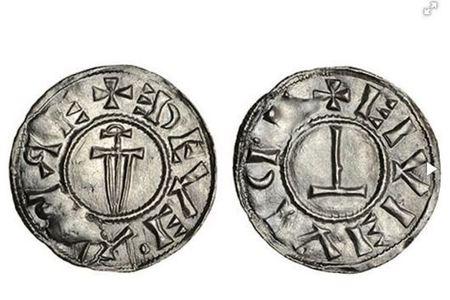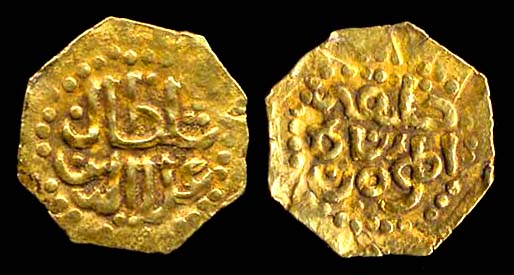-- LANGUAGES & LITERACY --
The Conan RPG is very liberal in the way it grants characters languages. I'm generally in agreement with the rules as it suits the game world. Conan doesn't seem to have too many troubles in communicating no matter where he goes. I do have two notes on this subject, though.
First, the GM should step in and limit or monitor the number of languages a character gets if that character does not have a lot of contact with other peoples. It's hard for me to believe that a Vanir raider speaks too many languages. It would depend on where he raids and how much time he spends away from his people. And a Cimmerian? Should he be able to read and write? The Cimmerian supplement says that Cimmerians think of the written word as a form of sorcery. They're amazed at how strange markings can make a person know so much. It must be sorcery.
In these situations, a GM should step in and limit language choices, and possibly even make the character illiterate in some or all of the languages the character does know. Gaming with these characters, the language and literacy restrictions can easily be lifted as the character adventures, spends time becoming literate, and ventures to new lands to learn new languages. Just use the rule that is already in the game. See page 15 of the Core rulebook (last paragraph of the Languages section).
My second note is that the rules may be just a tad too liberal with any type of character in speaking, reading, and writing multiple languages. There's no room at all for the (much more likely) character who reads and writes his native language plus a few others but also only speaks a few more.
I suggest this: Allow characters to automatically read & write their native language. Then, for every other language that they know, roll an INT check. It's a DC 15 for any language listed as a bonus language (the languages the character is most likely to know) and a DC 20 for any known language outside of those listed under the character's race. (And, of course, the GM can step in and adjust the DCs if he sees fit for his own campaign.)
For example, I posted a 1st level Argossean Thief earlier in the thread. He's a man named Yuri. At character creation, he had INT 15, with all the automatic and bonus languages, ended up knowing 7 languages: Argossean, Aquilonian, Kothic, Ophirian, Shemitish, Stygian, and Zingaran.
Using the rule I suggest, Argossean automatically becomes a language in which Yuri is literate. As for the other six, I have to roll. With the INT 15, I have a +2 modifier, and I roll a DC 15 or better for each of the remaining six languages. I rolled pretty well and ended up with the character being able to read & write in Aquilonian, Ophirian, Shemitish, and Stygian. It is only Kothic and Zingaran where the character speaks the tongue but cannot read or write it. For those, as we game, I will use the rule on page 15 of the 2E Core rulebook whenever the player attempts to learn to read and write in those two languages.
COMMONERS
Let's talk about Commoners for a moment, too. According to the game's rules, an Commoner classed character is illiterate, not even reading and writing his native language. The Commoner may speak several languages, but he doesn't know his letters in any of them. The rules say that it requires 2 skill points to be spent to make the character literate. If you use my rule I suggest above, then the rule for Commoners should be changed a tad so that spending the 2 skill points makes the Commoner literate in his native language and any automatic languages the character is given. Then, for any other languages the Commoner knows, use the system outlined above. Make the rolls and see where the character is literate and where he can only speak the foreign tongue.
This would work for any illiterate character, too. Sometimes, a GM will require a PC to start the game illiterate. I could see this with, say, a Kushite character, who has spent his entire life (before the game starts) knowing nothing but the jungles of the Black Kingdoms. Since he is a PC, then maybe charging him 2 skill points is a bit harsh to become literate. Give the points to him free, but make the player make the roll. When he succeeds, in the spirit of the rules on page 15, the character will then be considered literate. Once a character can read and write one language, he is more equipped to start learning to read and write the other languages his knows.
How do I indicate literacy? I just place a mark next to the language on the character sheet. A character who can speak a language will have the square next to the language penciled in dark. If the character can also read and write that language, I put a dash to either side of the language name so that it's easy for the player to scan the language list (see the character sheet at the back of the Core rulebook) and see which languages the character can speak and which he can also read and write.
The rule I've written in my GM's notebook says the following:
DECIPHER SCRIPT
Illiterate characters (even those who are lettered in other languages) use the Decipher Script skill understand written language that they do not know.
The Conan RPG is very liberal in the way it grants characters languages. I'm generally in agreement with the rules as it suits the game world. Conan doesn't seem to have too many troubles in communicating no matter where he goes. I do have two notes on this subject, though.
First, the GM should step in and limit or monitor the number of languages a character gets if that character does not have a lot of contact with other peoples. It's hard for me to believe that a Vanir raider speaks too many languages. It would depend on where he raids and how much time he spends away from his people. And a Cimmerian? Should he be able to read and write? The Cimmerian supplement says that Cimmerians think of the written word as a form of sorcery. They're amazed at how strange markings can make a person know so much. It must be sorcery.
In these situations, a GM should step in and limit language choices, and possibly even make the character illiterate in some or all of the languages the character does know. Gaming with these characters, the language and literacy restrictions can easily be lifted as the character adventures, spends time becoming literate, and ventures to new lands to learn new languages. Just use the rule that is already in the game. See page 15 of the Core rulebook (last paragraph of the Languages section).
My second note is that the rules may be just a tad too liberal with any type of character in speaking, reading, and writing multiple languages. There's no room at all for the (much more likely) character who reads and writes his native language plus a few others but also only speaks a few more.
I suggest this: Allow characters to automatically read & write their native language. Then, for every other language that they know, roll an INT check. It's a DC 15 for any language listed as a bonus language (the languages the character is most likely to know) and a DC 20 for any known language outside of those listed under the character's race. (And, of course, the GM can step in and adjust the DCs if he sees fit for his own campaign.)
For example, I posted a 1st level Argossean Thief earlier in the thread. He's a man named Yuri. At character creation, he had INT 15, with all the automatic and bonus languages, ended up knowing 7 languages: Argossean, Aquilonian, Kothic, Ophirian, Shemitish, Stygian, and Zingaran.
Using the rule I suggest, Argossean automatically becomes a language in which Yuri is literate. As for the other six, I have to roll. With the INT 15, I have a +2 modifier, and I roll a DC 15 or better for each of the remaining six languages. I rolled pretty well and ended up with the character being able to read & write in Aquilonian, Ophirian, Shemitish, and Stygian. It is only Kothic and Zingaran where the character speaks the tongue but cannot read or write it. For those, as we game, I will use the rule on page 15 of the 2E Core rulebook whenever the player attempts to learn to read and write in those two languages.
COMMONERS
Let's talk about Commoners for a moment, too. According to the game's rules, an Commoner classed character is illiterate, not even reading and writing his native language. The Commoner may speak several languages, but he doesn't know his letters in any of them. The rules say that it requires 2 skill points to be spent to make the character literate. If you use my rule I suggest above, then the rule for Commoners should be changed a tad so that spending the 2 skill points makes the Commoner literate in his native language and any automatic languages the character is given. Then, for any other languages the Commoner knows, use the system outlined above. Make the rolls and see where the character is literate and where he can only speak the foreign tongue.
This would work for any illiterate character, too. Sometimes, a GM will require a PC to start the game illiterate. I could see this with, say, a Kushite character, who has spent his entire life (before the game starts) knowing nothing but the jungles of the Black Kingdoms. Since he is a PC, then maybe charging him 2 skill points is a bit harsh to become literate. Give the points to him free, but make the player make the roll. When he succeeds, in the spirit of the rules on page 15, the character will then be considered literate. Once a character can read and write one language, he is more equipped to start learning to read and write the other languages his knows.
How do I indicate literacy? I just place a mark next to the language on the character sheet. A character who can speak a language will have the square next to the language penciled in dark. If the character can also read and write that language, I put a dash to either side of the language name so that it's easy for the player to scan the language list (see the character sheet at the back of the Core rulebook) and see which languages the character can speak and which he can also read and write.
The rule I've written in my GM's notebook says the following:
Literacy
Automatic for native and any other automatic languages. Roll INT check at DC 15 for literacy in any Bonus language. Roll INT DC 20 for literacy with any language known but not listed under the character's race.
For Commoners and other illiterates, this rule applies after the 2 skill points are spent to make the character literate. (But, illiterate PCs do not have to spend the two skill points.)
Follow the language learning rules on page 15 of the Core rulebook, last paragraph.
DECIPHER SCRIPT
Illiterate characters (even those who are lettered in other languages) use the Decipher Script skill understand written language that they do not know.
Last edited:







